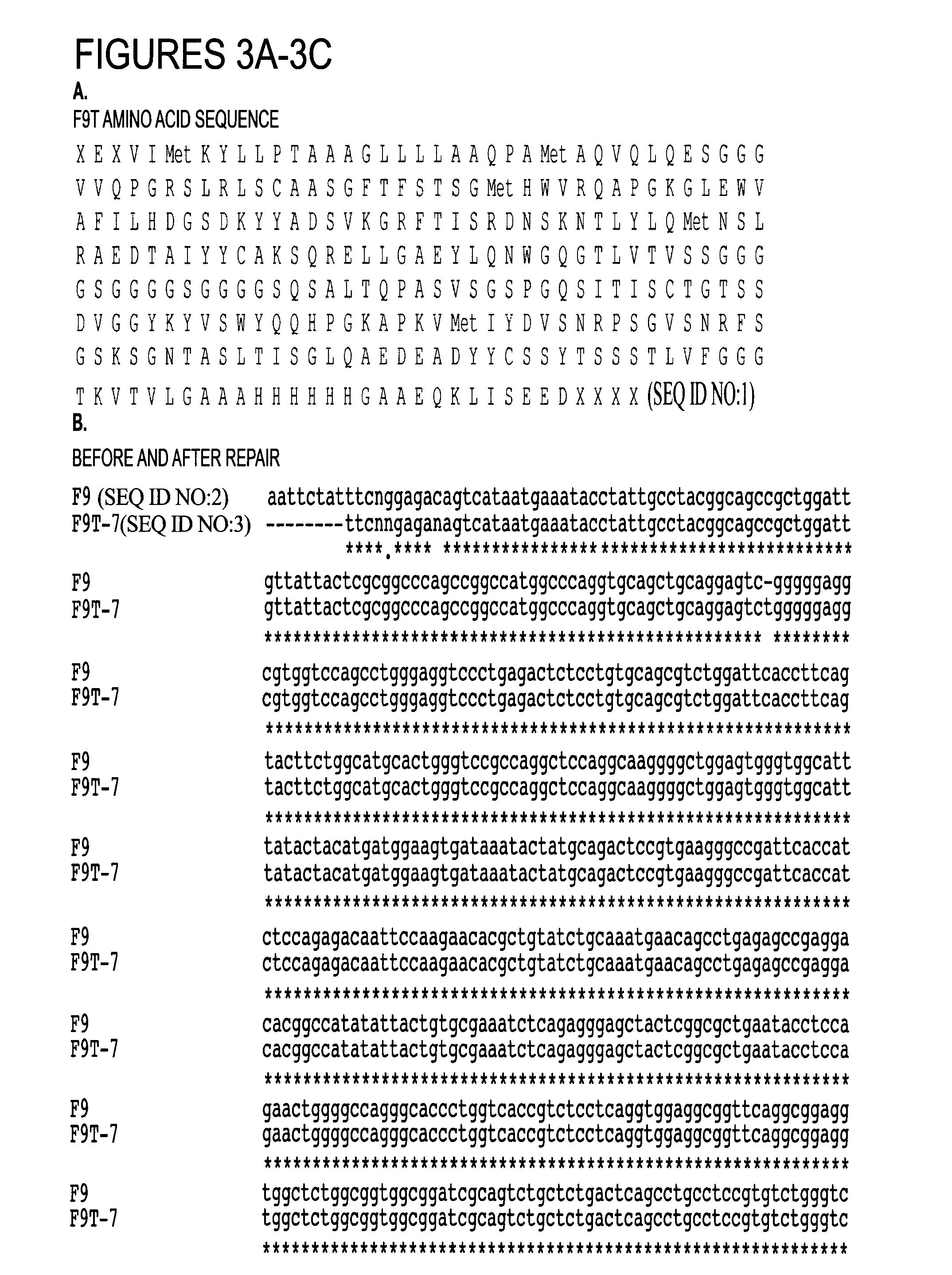Antibody based reagents that specifically recognize toxic oligomeric forms of tau
a technology of oligomeric forms and antibodies, applied in the direction of immunoglobulins, peptides, drugs/humans, etc., can solve the problems of reducing the affinity of tau to the microtubules, affecting the progress of the drug, and affecting the formation rate of tau aggregates
- Summary
- Abstract
- Description
- Claims
- Application Information
AI Technical Summary
Benefits of technology
Problems solved by technology
Method used
Image
Examples
example 1
[0097]A vast number of studies have correlated protein aggregation with neurodegenerative diseases including AD, Parkinson's and Dementia with Lewy Bodies. Numerous recent studies suggest that specific oligomeric forms of these proteins are involved in neuronal toxicity and can interfere with important functions including long term potentiation. Various soluble oligomeric species of Aβ and a-syn have been shown to occur early during the course of AD and PD, and increasing evidence implicates oligomeric forms of tau in AD and other tauopathies.
[0098]Assays are being developed to study tau oligomer content in CSF, and initial results suggest increased levels of tau oligomers in AD CSF compared to non-AD specimens. We developed novel methods to purify recombinant human tau isoforms and to stabilize their oligomeric structures formed by disulfide linkages. Additionally, we purified tau from human AD brain that retains its hyperphosphorylation. These preparations have been used in mice t...
example 2
[0130]Alzheimer's disease (AD) is a prevalent neurodegenerative disease in which the progressive neuronal loss and cognitive dysfunction are observed. About 5 million Americans are living with AD and this number is believed to triple by 2050. Unfortunately, no cure has been found as of yet. The main pharmacological approaches are symptom treatment such as acetylcholine inhibitor. AD has two neuropathological features: extracellular deposit of amyloid beta fibrillar or diffuse and intracellular neurofibrillary tangle (NFT) of tau. Increasing evidence suggests that protein misfolding, aggregation and fibril formation both features are closely associated with the pathogenesis of AD. Normal tau plays important role in assembling neuron microtubule and stabilizing its structure and physiological function while abnormally hyperphosphorylated tau and its oligomeric and aggregated forms are considered correlated with synapse loss. Reagents targeting oligomeric tau over monomeric or aggregat...
example 3
[0142]Traumatic Brain Injury (TBI) affects over 1.7 million people each year, and over 230,000 soldiers have suffered TBI on the battlefield (http: / / www.dvbic.org / traumatic-brain-injury-tbi-awareness-and-prevention). Around 10-20% of soldiers serving in Iraq and
[0143]Afghanistan have suffered TBI from different sources. It is well established that traumatic brain injury (TBI) can disrupt cognitive functioning. The brain is very sensitive to stress and injury and responds by expressing a variety of neuromorphological and neurochemical changes. TBI induces axonal injury and damage to protein transport mechanisms, so neurofilament proteins, such as tau, which accumulate in axons following TBI, play a critical role in TBI. Following TBI, increased levels of tau in brain fluid, CSF and serum samples are all predictive of adverse long-term clinical outcomes. Neurofibrillary tau aggregates have been identified in soldiers suffering from TBI as well as in many athletes such as football play...
PUM
| Property | Measurement | Unit |
|---|---|---|
| size | aaaaa | aaaaa |
| size | aaaaa | aaaaa |
| temperatures | aaaaa | aaaaa |
Abstract
Description
Claims
Application Information
 Login to View More
Login to View More - R&D
- Intellectual Property
- Life Sciences
- Materials
- Tech Scout
- Unparalleled Data Quality
- Higher Quality Content
- 60% Fewer Hallucinations
Browse by: Latest US Patents, China's latest patents, Technical Efficacy Thesaurus, Application Domain, Technology Topic, Popular Technical Reports.
© 2025 PatSnap. All rights reserved.Legal|Privacy policy|Modern Slavery Act Transparency Statement|Sitemap|About US| Contact US: help@patsnap.com



